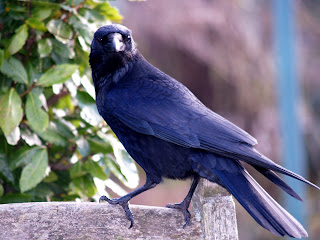
It seems to me slightly odd that UK Government ministers currently claim to be seriously involved in both ensuring that there is sufficient housing to fulfill all the current needs (or perhaps, more properly, the desires?) of the country's population as well as acting decisively on a range of environmental issues (waste disposal, recycling, global warming etc). People in the UK appear to be more obsessed by home ownership (certainly to a greater extent than in some other European countries e.g. the Netherlands) and house building in the UK style certainly generates a lot of greenhouse gas (via concrete production etc) as well as restricting land available for other purposes e.g. agriculture, as refuges for wildlife etc. Even with the best will in the world, house creation generally reduces local biodiversity. So how come that it is never admitted that there is a tension between these two aspirations?
+Oxwich.jpg)
+in+water+Loughor.jpg)
+in+water+poised+Baie+de+Somme+France.jpg)




+on+Ivy+flower+North+Gower.jpg)
+skull.jpg)
+towards.jpg)

+close+up+Bynea.jpg)







+close+up+in+anemone.jpg)

















